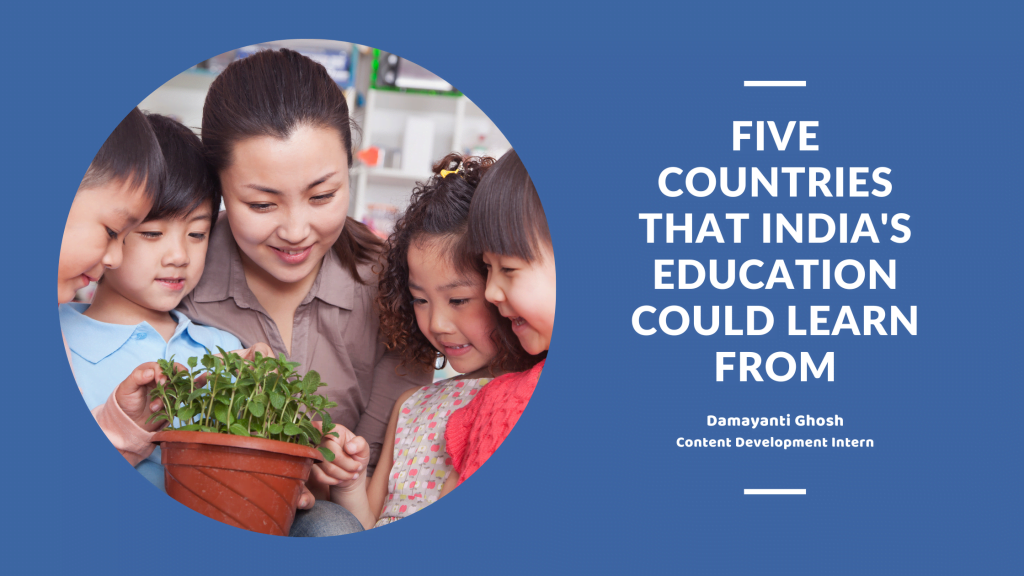
George Reavis’ fable, “The Animal School” is a unique story of a unique school. In the story, the animals established school for their children where they gave special importance to a set-in-stone curriculum that included all the new world skills like running, climbing, swimming, and flying. All the animals needed to take up all the subjects. There was a duck who, despite being excellent in swimming, was average in flying and poor in running. Since the school curriculum required every animal to pass in every subject, the duck started taking extra classes in running. Later, his webbed feet became so bruised by rigorous running practice that his swimming skills deteriorated as well. A rabbit who always stood first in running, had a nervous breakdown because of the pressure to do well in swimming. The squirrel was best at climbing but his teacher pressurized him to fly. He developed a muscle spasm because of excessive exertion on his muscles and ended up with a C in climbing and a D in running. At the end of the year, they awarded an eel the highest average because he could swim well and perform the other activities in bits and crumbs. It forced some other animal children who did not know any of the above activity subjects to stay out of school.
If this story reminds you of the education system of India, then you are not alone. The Indian Education System has faced criticism for its inflexible nature since time immemorial. Its inclination for standardized tests is a great disadvantage and burden for the students. It requires all the students to answer the same set of questions and take up the same subjects. This way the students end up being like the average duck of the animal school who was exceptional in swimming initially, but excessive focus on other areas made his swimming skills drop to an average level. The education system sheds more light on the importance of textbook knowledge than on real-life practical experiences. The education system is also an unequal and segregated system where the privileged get the most benefits and opportunities. Despite all the developments, there has been little to no attention to making education equitable and culturally responsive for the underserved communities.
There is also a stark difference between how India defines education and how other countries choose to define it. Education in India measures academic performances, more than all-round development.
Like George Reavis, Tomorrowsmith Foundation believes that we need to find inclusive and practical solutions to the ‘new-world’ challenges. For this, we must understand how other countries and cultures are doing in terms of education. Through this, we can imbibe the good from them, and implement it positively in our system. This is the reason we have put together five education systems from around the world and highlighted their positives so that India can emulate some of it.
Cuba
In ensuring the basic rights of its citizens, Cuba has been a beacon of inspiration to the entire world. With a unique battle cry of “Doctors, not bombs”, Cuba has provided special attention towards educating the masses so they can work for the betterment of humankind. In 2012, Cuba spent 12.9% of its Gross Domestic Product on education, making it the country with the highest educational disbursement in the world. All children in Cuba have access to free education. The education system in the country has created a benchmark for inclusive learning. Education has penetrated deep into the remotest places of the country. This has been possible by the allotment of ‘mobile teachers’ who travel to the students’ houses if they do not appear in school because of sickness or disability. The government has also constructed schools in the remotest places of the country irrespective of how low the number of students is, to ensure that they leave no child behind.
Finland
Japan
Manners and etiquette are recurring traits in Japanese culture which find a place in the education system of the country as well. What sets Japanese schools apart is their emphasis on the manners of the children before textual knowledge. More than subject learning, the Japanese educational system underpins value-based learning. Children learn to respect other human beings, animals, and nature from a very early age. If you are a person who grew up watching Japanese cartoons, you must be familiar withthe importance of cleanliness in Japanese school life. The most fascinating characteristic of Japanese schools is the absence of janitors. Students dividethemselves into teams and clean their school themselves. They mop, dust, scrub, and sweep their classrooms, hallways, playgrounds, gardens, fish ponds, and even toilets. Known as Gakko Soji or simply school cleansing, this practice instils in students the value of respecting each other’s work and makes them involved with the community. Students also serve lunches and clean the table after the meal. Students do not enter the classroom wearing the same shoes that they wear outside. Before entering the classroom, they leave their dirty shoes on a designated rack and wear separate slippers meant for indoors.
The Netherlands
China
#educationsytems #transformation #teaching #tomorrowsmith
